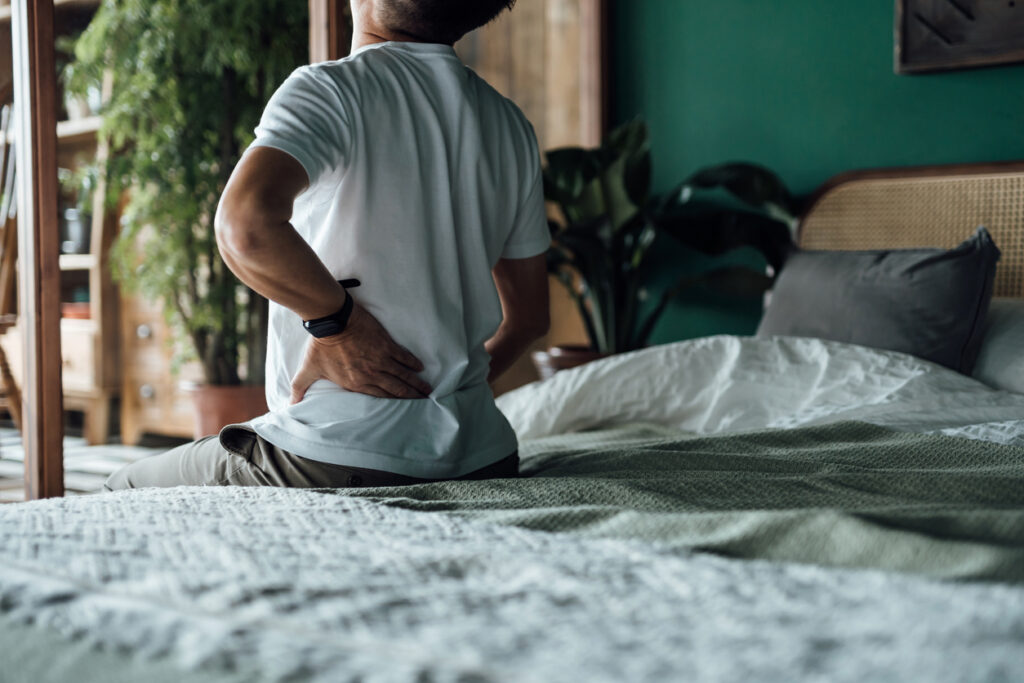
Lower back pain can happen for many reasons. Most of the time, it happens as a result of muscle strain from overwork or intense exercise. Other times, it can be a long-term problem, like arthritis or stenosis in the spine.
Fortunately, there are ways to treat back pain, but the best intervention will depend on the exact cause of your pain. Here are five tips you can try to treat your lower back pain.
1. Take Over-The-Counter Medicine
Certain painkillers available over the counter, like ibuprofen (Advil) and acetaminophen (Tylenol). These medications work well for spinal pain, strains, and sprains. Note that you must only take them at the recommended dosage.
While ibuprofen can provide some muscle relaxing effects that can alleviate muscle strain, it mainly works by decreasing pain and inflammation. In the US, muscle relaxants are not available over the counter, so if you think you may need some, you need to consult your healthcare provider.
2. Keep Moving
In the past, doctors treated back strains and sprains by recommending bed rest. Recent research has shown this is more harmful than helpful. Continuing your daily activities as you are able actually improves blood flow to your low back which promotes healing. If a certain activity increases your pain, stop immediately. However, it is safe and even recommended to continue other daily activities and to incorporate other light exercise into your day, such as walking.
3. Apply Hot Or Cold Compress
It’s beneficial to apply a cold compress on your lower back just after it has begun hurting. The coolness can help minimize inflammation and reduce any swelling present. A cold compress also numbs the area, lessening the ache. Make sure to put a barrier between the compress and your skin, such as a towel, and only apply the cold compress for 15 minutes several times a day.
You should try a hot compress if the pain continues and doesn’t seem to ease. You can start with a hot shower or bath to relax your back muscles. Then, you can apply a heating pad or compress to your lower back. The heat will help soothe the pain.
A hot compress might not be the best choice for children and older adults with sensitive skin. The warmth may be too much and burn the skin. You can also ask your healthcare provider if you’re unsure whether you need a hot or cold compress.
4. Improve Your Posture
Often, improper posture leads to low back pain. Try modifying how you sit and stand to find some relief.
Change how you sit at your desk if you remain seated for long hours at work. While working, follow these tips:
- Ensure that your head, hips, and shoulders align while sitting
- Elevate your computer monitor to be at eye level to keep your neck in alignment
- Position your knees at a 90-degree angle and keep your feet flat on the floor
- Use an ergonomic chair and adjustable desk
- Take breaks so that you are not sitting for more than two hours at a time
- Do a few stretches or walk around after each task
These changes help alleviate pain and encourage you to form better habits while working. They can improve your posture and prevent the pain from returning.
5. Consult A Physiatrist
If your pain persists after a week of at-home care, it’s time to see a healthcare provider. Consulting a physiatrist is recommended for acute lower back pain.
A physiatrist is a physician specializing in treating conditions that involve the:
- Muscles
- Bones
- Joints
- Nerves
- Brain, and
- Spinal cord
In addition, they focus on pain management for conditions affecting these parts of the body as well as injury prevention.
A good physiatrist may recommend various intervention options to a patient with lower back pain. First, they will conduct different tests to see what’s causing your pain. For example, lower back pain on your right side might be from kidney stones or from a muscle strain, but tests are needed to determine the exact cause.
Then, they will recommend the best treatment for your specific condition, like spinal injections, physical therapy, and prescription medication.
Lower Back Pain Treatment Near Me
Effective lower back pain treatments include painkillers, cold and hot compresses, mild exercise, and posture improvement. But if those usual remedies don’t work and the pain continues, it’s best to see a doctor.
At Delaware Back Pain & Sports Rehabilitation Centers, our physiatrists are experts in their field and help patients with any range of conditions from lower back pain to concussions.
To schedule an appointment with us, call us at (302) 529-8783 or fill out our appointment request form. We have locations in Newark, Middletown, Wilmington, Milford, Dover, and Smyrna, for your convenience. We look forward to treating your low back pain and getting you back to your life pain-free!


